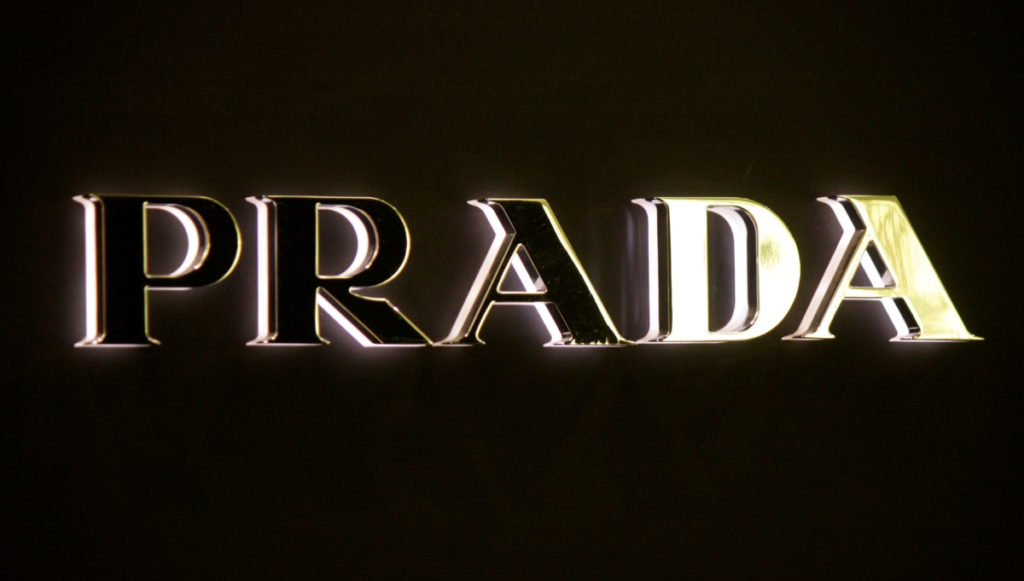Prada joined a number of rivals that have been striving to control pricing policies better as they face an increasingly fragmented market, in which prices have been put under pressure by booming.
Prada is one of the most recognizable brands that can be found in the entire world. For proof, consider how its revenues can be counted in the billions on an annual basis, which makes sense because its operations plus its subsidiaries’ operations extend throughout numerous countries. With that said, while Prada might be very recognizable for a lot of people out there, it can nonetheless be useful to mention something about how it came into existence.
- Italian fashion house Prada SpA posted slim gains in its $2.14 billion IPO debut in Hong Kong, defying expectations for a weak start as investors who couldn't buy into the IPO snapped up.
- Italian fashion house Prada, which is seeking to raise up to $2.6 billion through a Hong Kong IPO, has generated five times demand for its offer, a source familiar with the matter told Reuters on.
In short, Prada started up in 1913 as a Milan-based business that specialized in leather products. In those times, the business was run by the Prada brothers Mario and Martino. It is interesting to note that Mario Prada believed that women had no place in businesses, which is why he prevented his female relatives from participating in Prada’s operations. However, it turned out that fate had other plans, as shown by how his daughter Miuccia was the one to take his place because his son had no interest in running it whatsoever.
With that said, while Prada had sales in the $450,000 range in 1978, it wasn’t until Miuccia’s daughter Luisa took over that it started seeing its spectacular rise to its present position. Luisa is a fascinating figure who has been involved in a wide range of enterprises, but going into too much detail would take up more space than what can be found here. Instead, it suffices to say that with some help from her business-minded husband, she put her creativity to excellent use in coming up with new products for her corporation. Success wasn’t instant, but in time, Luisa’s products found receptive markets, which in turn, enabled the corporation to grow and grow and grow.

Nowadays, Prada is huge. Moreover, it isn’t limited to a single brand because it owns a number of subsidiaries, which is connected to the fact that it went on something of a shopping spree in the 1990s. To get an idea of Prada’s size in present times, consider the fact that its revenues were $3.91 billion in 2016, which is a huge contrast to the corporation’s performance four decades ago.
How Was the Prada Logo Invented?
It is interesting to note that the Prada logo has remained much the same over the course of the corporation’s history. Moreover, it is interesting to note that said logo is an excellent example of a design philosophy that stresses elegance over excess as well as simplicity over complexity, which is something that contrasts with those of some of Prada’s most notable competitors.
Having said this, much the same isn’t exactly the same. The earliest version of the Prada logo was fancier than the one that sees the most use in the present times. In short, it consisted of the Prada name enclosed in a circle formed from a knotted rope. On top of the circle was a coat of arms. Meanwhile, beneath the Prada name but still contained within the circle was “Milano DAL 1913.” This version of the Prada logo still sees some use here and there, but for the most part, it has been replaced by a much more simplified version.
Speaking of which, other details of the Prada logo have managed to remain remarkably consistent. For example, the font for the Prada name has remained the same since the start, which is one of the factors that have helped it stand out, seeing how said font is one of a kind. Furthermore, the Prada logo is almost always black, though it has been known to show up in a small number of other colors such as gold and white under certain circumstances as well. This color choice tends to make the Prada logo very noticeable when contrasted with its background, thus serving to strengthen Prada’s brand value by making it easier for people to not just see the signs of Prada but also make those sights stand out to them.
Based on this, it seems safe to say that the Prada logo will continue to see use for years and years to come. Small elements of the Prada logo may or may not change in the future, but by this point in time, there has been so much brand value built up that it would be a serious loss if the corporation switched to something else, meaning that it is very unlikely to say the least.
Prada Article Numbers Lookup

Prada Article Numbers Online
